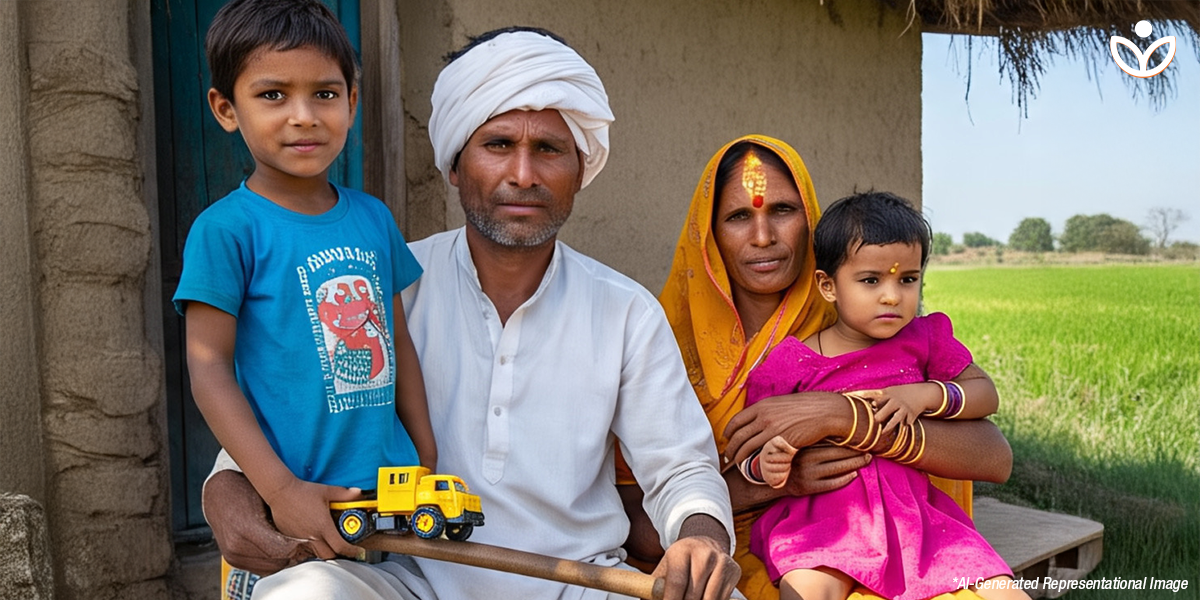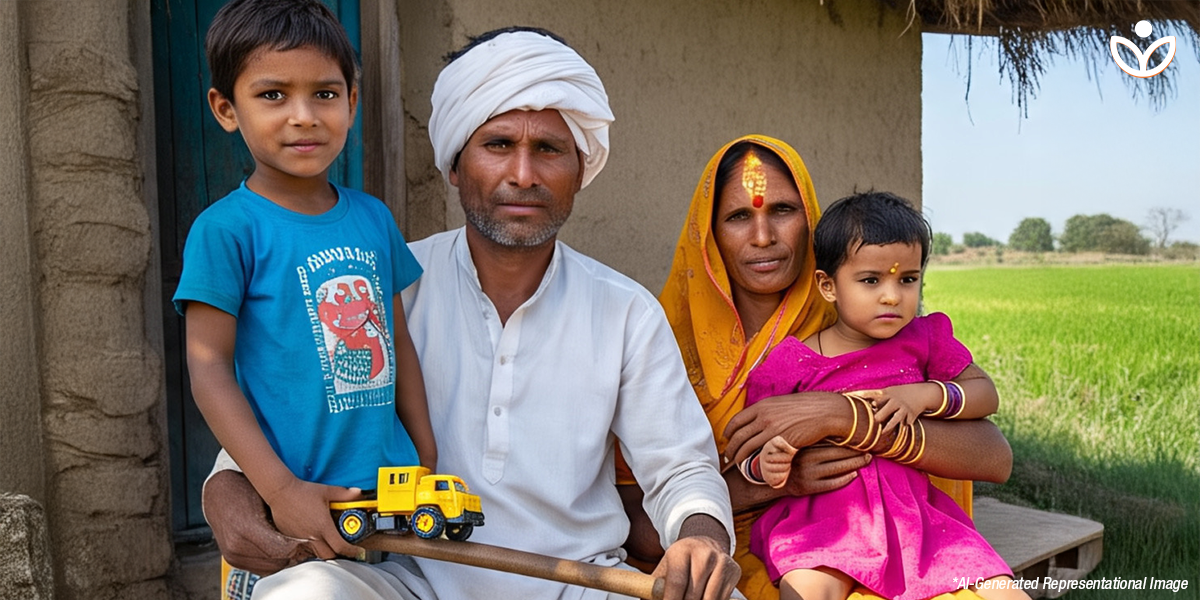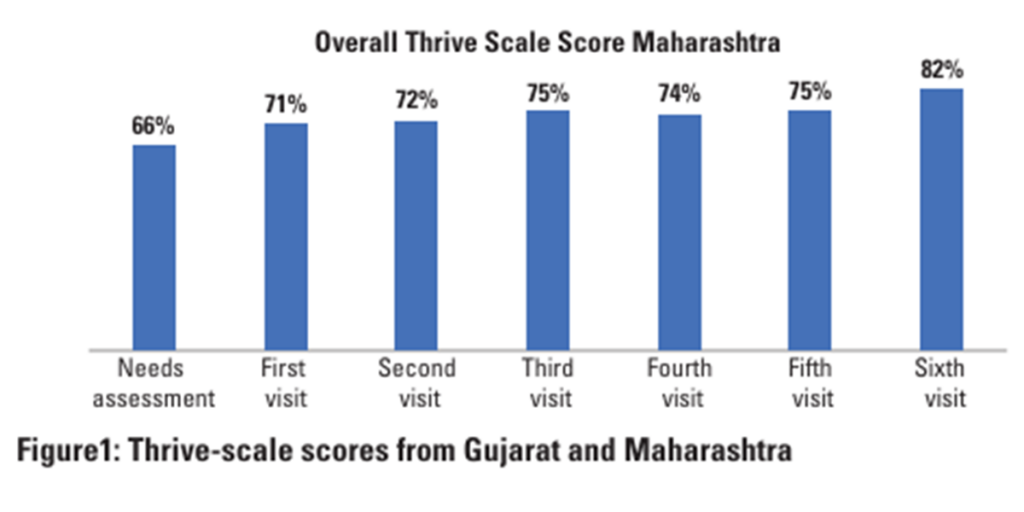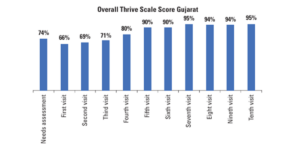
Addressing the Challenges of Vulnerable Populations in India
India is home to the world’s largest child population, with over 39% of its population under the age of 18. While this represents immense potential for the nation’s future, a significant proportion of these children face vulnerabilities, including poverty, neglect, abuse, and limited access to education and healthcare. It is estimated that millions of children in India are at risk of separation from their families due to socioeconomic challenges, migration, or lack of adequate support systems.
Recognizing the critical role of family in a child’s holistic development, India has been making strides toward strengthening child protection systems and empowering local Child Protection Committees (CPCs) to ensure every child grows up in a safe, nurturing, and permanent family environment. This shift marks a significant step in safeguarding children’s rights and fostering a stronger foundation for family strengthening in the country.
The Family Strengthening Project
The Family Strengthening Project, in collaboration with UNICEF and the Miracle Foundation India, addresses these challenges by reducing the risk of family separation through preventive measures. Partnering with the Deepak Foundation, the project implemented a gatekeeping mechanism to strengthen families and ensure children’s overall development. This initiative promotes quality family- based and alternative care in Gujarat and Maharashtra, aligning with the Juvenile Justice (Care & Protection) of Children Act, 2015. Pilot areas were identified in Ramnagar, Maharashtra, and Dumali Juth Panchayat, Gujarat, covering villages such as Nani Dumali, Moti Dumali, Gungawada, and Jaloda. By empowering families and protecting children, the project establishes a robust framework for care and support, offering a scalable and replicable model for family strengthening and social reintegration.
Process and Implementation
The project began with a situational analysis conducted by the Deepak Foundation to assess socio- economic conditions and child protection issues. In Gujarat, challenges included child labor, migration, school dropouts, malnutrition, and domestic violence. In Maharashtra, issues such as nonfunctional Ward Child Protection Committees (WCPCs) and child rights vulnerabilities were prevalent. Using community mapping, informant interviews, Focus Group Discussions (FGDs), and Participatory Rural Appraisals (PRAs), at-risk families were identified. Needs assessments in targeted areas like Chhotaudepur (Gujarat) and Pune (Maharashtra) guided community engagement activities during the COVID-19 pandemic.
Local volunteers played a critical role, with 22 active in Gujarat and 20 in Maharashtra. Efforts focused on reactivating Village/Ward Child Protection Committees (VCPC/WCPC). Three VCPCs were formed in Gujarat and one WCPC in Maharashtra. Additionally, Bal Panchayats were established—five in Gujarat and one in Maharashtra—to empower children and address child protection needs. Training sessions built the capacity of committee members, enhancing collaboration with stakeholders like school authorities, PRI members, and local leaders to advocate for child rights and protection.
Role of Ward/Village Child Protection Committees and Bal Panchayats
The VCPC/WCPCs and Bal Panchayats were instrumental in strengthening gatekeeping mechanisms across villages. Members actively identified community issues such as child marriage, school dropouts, child labor, and substance abuse. Regular meetings improved coordination and rapport with government officials and stakeholders. Visits to vulnerable families were conducted, and cases were presented in meetings to discuss potential support provisions. Members also addressed challenges posed by the COVID-19 pandemic, using community advisory networks to provide support to affected families and ensure child protection.
To enhance their functionality, W/VCPCs in both states implemented a self-assessment tool provided by the Leher Foundation. This tool evaluated parameters such as awareness, capacity building, and meeting effectiveness. Based on identified gaps, action plans were developed to strengthen committee operations. Training sessions on life skills, child rights, psychosocial support, and leadership further built the capacity of W/VCPCs, Bal Panchayats, and volunteers.
Bal Panchayat meetings were regularly organized on a monthly basis in the project areas. Throughout the project period, they effectively identified child protection and child rights issues, playing an instrumental role in addressing challenges such as child marriage, school dropout, and addiction in the community. Additionally, they created awareness regarding child protection and child rights in their respective community areas.
Key Initiatives of W/VCPC & Bal Panchayats in Gujarat and Maharashtra
In Gujarat, VCPCs facilitated health check-ups, prevented child marriages, provided livestock to families, and supported child rescue operations. In Maharashtra, WCPCs partnered with the Pune Municipal Corporation to establish Balwadis, re-enrolled dropouts through free coaching, and coordinated with police to address child protection issues.
Bal Panchayats undertook 29 initiatives, including re-enrollment of school dropouts, counseling children on issues like tobacco addiction, rescuing children from labor, and organizing awareness campaigns. Activities included street plays, rallies, and distributing sanitary napkins to promote health and child rights.
Progress Visits
As a measure of family strengthening and mitigation of red flags, continuous monitoring of children was done through progress assessment visits. The volunteers along with the CPCs made regular visits to the vulnerable families to identify the need of the families as per the five well being domain of livelihood, living conditions, social and family relationships, health and mental health, and education. Based on these visits the cases of the families are discussed in the CPC meetings and based on the discussions intervention plan were prepared. Further to address these issues the CPCs and volunteers, along with the Deepak Foundation, designed and finalized intervention plans for each child and their family. Based on these plans, families were linked with appropriate schemes and services.
In Gujarat, families faced several challenges, including poverty, lack of sustainable livelihood options, poor living conditions, school dropouts, and addiction. To address these issues, case-specific intervention plans were developed. Families living in inadequate housing were linked with the Pradhan Mantri Awas Yojana, while single parents and orphaned children benefited from the Palak Mata Pita Yojana. School dropouts received counseling alongside their parents, resulting in the children resuming their education. For families without sustainable livelihoods, connections were established with schemes such as the E-Shram Yojana and Sadhan Sahay Yojana. Differently-abled children were supported through the Sant Surdas Yojana, and families struggling with addiction received continuous counseling. To further secure the future of these families, they were enrolled in the Pradhan Mantri Jeevan Bima Yojana. Altogether, 72 families in Gujarat were successfully linked with various government schemes.
In Maharashtra, targeted interventions were implemented to address the needs of vulnerable families, linking a total of 49 households with various government schemes. Families without sustainable livelihoods were connected to the E-Shram Yojana, ensuring access to social security benefits. Girls from eligible families were supported through the Sukanya Samruddhi Yojana, promoting their education and future financial security. Those living in inadequate housing conditions were linked with the Pradhan Mantri Awas Yojana, while families were further safeguarded through enrollment in the Pradhan Mantri Jeevan Bima Yojana. Additionally, ABHA Cards were provided to improve access to health services and facilitate medical records management. These efforts aimed to enhance the overall well-being and security of the families involved.
To analyze the progress of the identified vulnerable children and their families during the project cycle, a total of 16 progress visits (10 in Gujarat and 6 in Maharashtra) were conducted by the Deepak Foundation. The Thrive Well tool was used to assess progress across five well-being domains: education, living conditions, livelihoods, health and mental health, and family and social relationships. Based on these assessments, feasible interventions were developed by volunteers in consultation with the identified families and children.
At the time of project closure, followup assessments were completed using the Thrive Scale™ for 108 children in Gujarat and 130 in Maharashtra. Significant efforts were made to enhance linkages and address identified red flags among vulnerable families to support their well-being.
Outcomes
The illustration showcases the Thrive Scale™ scores across two project regions over a reporting period. In both Gujarat and Maharashtra, there is a consistent improvement in the Thrive scale scores over time, suggesting that the interventions are becoming more effective and that families are gradually enhancing their conditions.
A total of 92 vulnerable families across Gujarat and Maharashtra successfully thrived. In Gujarat, out of 89 identified families, 56 remained active, 11 migrated, and 22 completed their intervention requirements, leading to case closures. Consequently, 61 out of 89 families in Gujarat are thriving. In Maharashtra, among the 64 identified families, 51 are still active, 11 have migrated, and 2 cases have been closed, with 31 out of 64 families thriving.
The Thrive Scale™ scores over the reporting period indicate consistent improvement in both project locations. In Gujarat, the score increased from 74% to 95%, whereas in Maharashtra, the score rose from 64% to 82%, highlighting the effectiveness of the interventions and the gradual enhancement of family conditions.
Conclusion
The Family Strengthening Project, through its collaboration with community-based child protection mechanisms such as VCPCs and Bal Panchayats, has demonstrated the transformative impact of localized, participatory approaches. By addressing key issues like child marriage, school dropouts, and substance abuse, and by linking families to essential government schemes, the project has significantly strengthened the safety net for vulnerable children and their families. The consistent rise in Thrive Scale™ scores underscores the sustainability and replicability of this model, paving the way for broader adoption across India.
Author: Kunal Patel, Manager-MEL, Miracle Foundation India
Disclaimer: The article was originally published on IACN Quarterly – Issue 18 (March 2025). The views expressed in the article are the author’s and do not necessarily reflect those of Miracle Foundation India.



